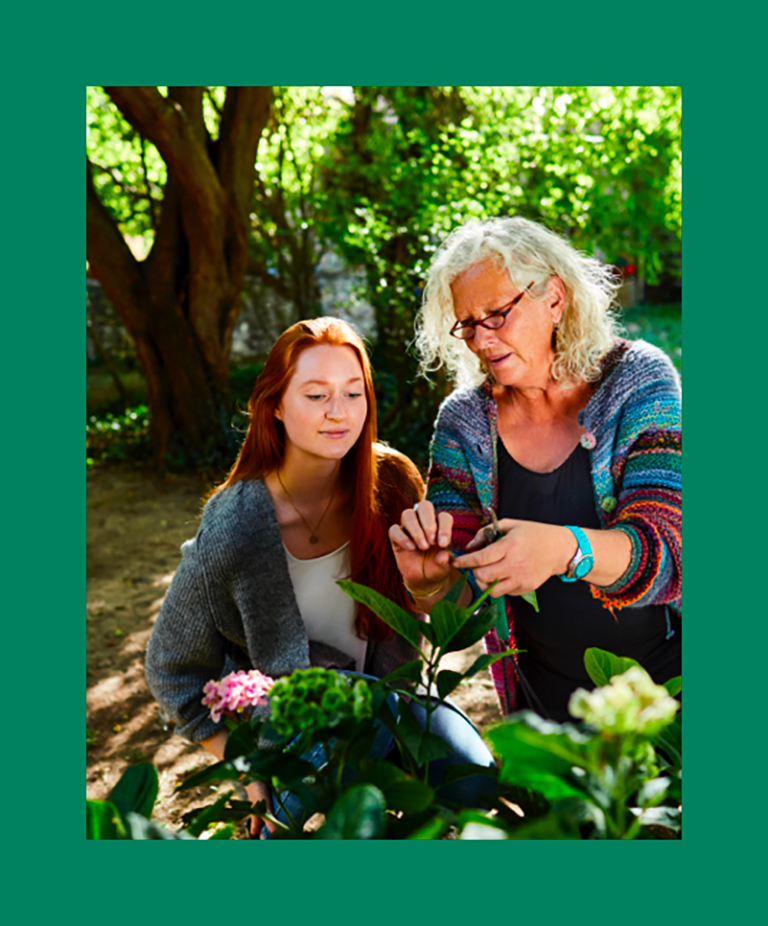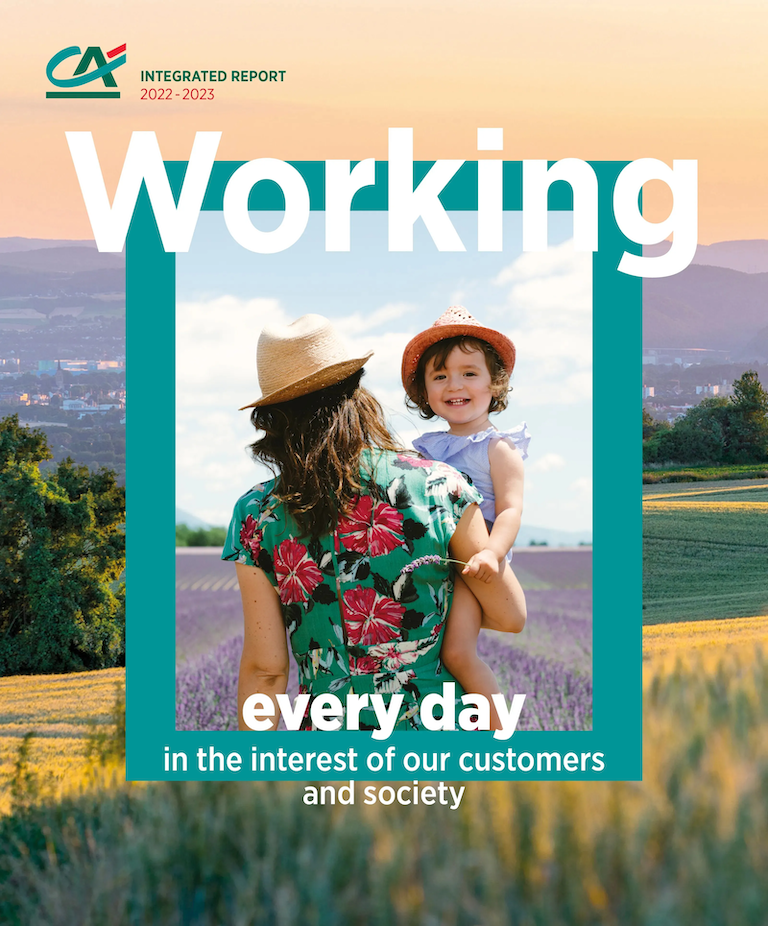A solid Group, determined to support all parts of the economy
Drawing on 130 years of legacy, we demonstrate our strength by putting it to the service of usefulness and universality. Currently the 10th largest bank in the world, we have developed these two principles by supporting the major transformations of society and by diversifying our businesses, our offers, our regions and our customers.
-
2022
- Presentation of the “Ambitions 2025” Medium-Term Plan
- Presentation of the targets and action plans for five sectors to achieve carbon neutrality by 2050 (Net Zero 2050)
- Agreement between CA Consumer Finance and Stellantis for the creation of a European leader in long-term car leasing
- CACEIS acquisition of the Royal Bank of Canada’s asset servicing business in Europe
2021
- Acquisition of Lyxor by Amundi
- Acquisition of Creval by CA Italy
- 100% unwinding of the Switch guarantee
- Acquisition of Olinn by CAL&F
- Announcement of the creation of a European leader in long-term car leasing by CA CF & Stellantis
- Agreement on the disposal of La Médicale by Crédit Agricole Assurances
2020
- Acquisition of Sabadell AM, disposal of BSF
- Framework agreement between CA Assurances and Europ Assistance
- Creation of an asset management joint venture between Amundi and Bank of China
2019
- Group Project and 2022 Medium-Term Plan
- Expression of the Group’s Raison d’Être
- Merger of CACEIS and Santander
2018
- Partnership of CA Consumer Finance with Bankia and Banco BPM
- Partnership of CA Assurances with Creval, Novo Banco
2017
- Acquisition of Pioneer Investments by Amundi
- Integration of Banca Leonardo and three Italian Banks
-
2016
Simplification of the Group’s capital structure
2015
Amundi initial public offering
-
2010
Creation of CA Consumer Finance, CA Leasing & Factoring and Crédit Agricole CIB; new head office in Montrouge (92)
2009
Launch of BforBank, creation of CA Assurances and Amundi
2006
Acquisition of Cariparma, CA Egypt, CA Ukraine and Emporiki
2005
Creation of CACEIS
2003
Acquisition of Crédit Lyonnais (renamed LCL in 2005) and acquisition of Finaref
-
2001
CNCA renamed Crédit Agricole S.A., initial public offering on 14 December 2001
1990
Creation of Pacifica (property and casualty insurance)
1988
Privatisation act concerning CNCA, which became a French Public Limited Company (Société Anonyme) owned by the Regional Banks
1986
Creation of Predica (life insurance)
-
1959
Order allowing Crédit Agricole to distribute housing loans, in rural areas, to non-farming households
1945
Creation of Fédération Nationale du Crédit Agricole (FNCA), which acts as a representative body for the Regional Banks
1899
Viger Act which allowed the creation of the Regional Banks
1894
Birth certificate of Crédit Agricole, the Méline Act, allowing the creation of the first Local Banks
1885
Creation of the first Local Bank in Poligny (Jura)
A cooperative and mutualist identity
Close to 11.5 million mutual shareholders form the basis of the cooperative organisation of Crédit Agricole and make it the world’s largest cooperative and mutual group.
The mutual shareholders own the capital of the 2,401 Local Banks in the form of mutual shares.
These Local Banks are represented on the Boards of Directors of the 39 Regional Banks. The mutual shareholders elect their representatives, the directors of the Local Banks, who in turn elect the directors of the Regional Banks.
An elected Chairman, and a Chief Executive Officer appointed by the Board of Directors of the Regional Bank are at the head of the governance.
The Regional Banks have a cooperative governance system, which by nature is responsible and fair. According to the democratic principle of “1 person = 1 vote”, each mutual shareholder has the same weight in voting in Local Bank Annual General Meetings, regardless of the number of mutual shares held.
More than 28,000 directors elected each year bring their expectations within the Group’s bodies and ensure good knowledge and consideration of customer needs. The pooling of these experiences is the heart of the cooperative model, which promotes customer-focused action.
-

-
More than 28,000
directors elected each year
The cooperative model
The mutual shareholders elect the directors of the Local Banks, who in turn elect the directors and Chairmen of the Regional Banks.
Usefulness, universality and availability
We want to be the trusted partner of all our customers. We address all of their financial and wealth management needs: financing, asset gathering, payment instruments, insurance, real estate and international support. The full power of our Raison d’Être has been revealed as we deal with a succession of recent crises. Our community is mobilised and focused on supporting both customers and the economy.
A true compass in the storm, the Group’s Raison d’Être is even more so in the periods of economic, climatic and social uncertainties arising in this moment.
It expresses clearly and concretely our principles of action for the company, for customers and for employees: a strategic framework for everyone, which we must all integrate into the heart of our activities and our development. It is an essential asset for the Group, both multipolar and built on a shared history and a shared ambition.
Over the course of a century, Crédit Agricole, drawing on its cooperative roots, has succeeded in combining a local customer focus with a global scale.
Usefulness
Societal usefulness lies at the very origin of the creation of Crédit Agricole. The determination to work in the interest of society as a whole and to make progress accessible to everyone has always guided Crédit Agricole’s actions: transformation of agriculture, electrification of rural areas, access to banking services for all, democratisation of access to property ownership, banking access via new technologies, access to wealth management advice and, today, support for the energy and environmental transition through our Societal Project.
Universality
Founded on cooperative and mutualist values, Crédit Agricole’s universality means that it is focused, in principle, on serving everyone, in all regions, and using all channels to address the financial concerns of its customers.
Availability
This combination of societal usefulness and universality has made it possible to create a global and sustainable model for banking relationships. The Group has created an original model, based on relationship banks, which brings together the products and services of the Group’s business lines to form a universal customer-focused banking model. Availability is also reflected in the Group’s long-standing presence in the regions to serve their development.
Crédit Agricole Group
Crédit Agricole Group includes Crédit Agricole S.A., as well as all of the Regional Banks and Local Banks and their subsidiaries.
(1) Non-significant: 0.6% treasury shares, including buy-backs in 2022 that will be cancelled in 2023. Once 16,658,366 shares are cancelled, the treasury shares will be non-significant and SAS Rue La Boétie’s holding will account for about 57%.
(2) The Regional Bank of Corsica, 99.9% owned by Crédit Agricole S.A., is a shareholder of SACAM Mutualisation.
(3) Excluding information made to the market by SAS Rue La Boétie, in November 2022, regarding its intention to purchase by the end of the first half year of 2023 Crédit Agricole S.A. shares on the market for a maximum amount of one billion euros.
(4) Disposal of Crédit du Maroc in December 2022.




